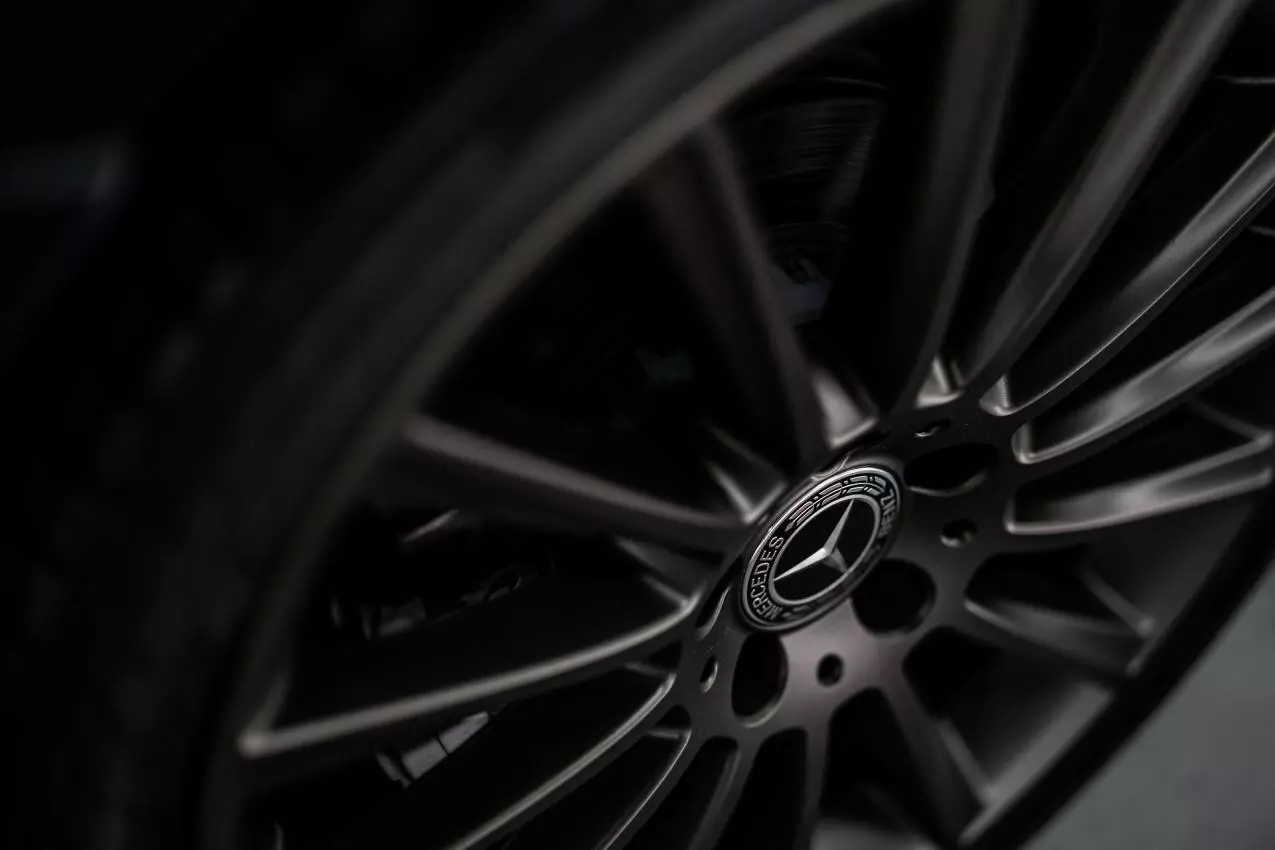What stops a car from passing an MOT? Explore the common factors that can prevent a car from passing its MOT test. Godstone Mercedes Ltd offer Mercedes servicing & MOT in Godstone and Surrey. From crucial emissions and safety checks to mechanical components, understand what can cause your vehicle to fail.
Top reasons for MOT Failure
The Ministry of Transport (MOT) test is a pivotal annual evaluation in the United Kingdom, ensuring vehicles comply with safety and environmental standards.
However, not all vehicles pass this stringent examination on their initial attempt. Let us delve into the leading causes of MOT failure and discover how drivers can effectively prepare their vehicles to triumph in this assessment.
One of the most prevalent reasons for MOT failure is faulty lights and indicators. Malfunctioning brake lights, dimmed headlights, or broken indicators jeopardize driver safety and impede visibility on the road. Insufficient tyre tread depth stands as another common culprit.
What Is Checked During An MOT Test?
Vehicles with tyres below the legal minimum tread depth fail the test due to compromised grip and control, particularly in adverse weather conditions. Windscreen and wiper issues contribute to MOT failures. A damaged windscreen or faulty wipers obstruct the driver's view of the road, endangering road safety. Suspension and steering defects also feature among the top reasons for MOT failure.
Faults in these essential components compromise vehicle stability and handling, posing risks to drivers and other road users. The brake system plays a pivotal role in road safety, and any inadequacies lead to MOT failure. Worn-out brake pads, leaking brake fluid, or other brake-related problems must be rectified promptly for roadworthiness.
Emissions standards are stringent during the MOT test, making emissions issues a frequent cause of failure. High levels of harmful pollutants may arise from poorly maintained engines, emphasizing the significance of regular vehicle upkeep and eco-conscious driving practices.
Properly displayed and legible registration plates and identification numbers are essential. Illegible, damaged, or improperly displayed number plates can result in MOT failure.
Seatbelt faults constitute another potential reason for MOT failure. Fraying or non-functional seatbelts pose significant safety hazards that must be addressed before the test.
Maintaining a well-functioning exhaust system is vital to meet emission standards and reduce noise pollution. Exhaust leaks, excessive noise, or emissions can lead to an MOT failure. Lastly, fluid leaks, such as engine oil, coolant, or brake fluid, present safety risks and often lead to MOT failure.
Quick Checks to Help your car pass the MOT
Headlights & Indicators:
Proper lighting is a fundamental aspect of safe driving, especially during low-light conditions or adverse weather. To ensure your car's headlights and indicators are in top-notch condition for the MOT, start by checking each light's functionality.
Turn on your headlights, sidelights, rear lights, hazard lights, and indicators one by one and verify that they are working correctly. If you notice any flickering or dimming, it could indicate a faulty bulb that needs to be replaced promptly.

Brake Lights:
Brake lights play a vital role in alerting drivers behind you when you slow down or stop, preventing potential collisions. To check your brake lights, enlist the help of a friend or family member.
While you press the brake pedal, have them observe the rear of your car to ensure that the brake lights illuminate instantly and brightly. If the brake lights are dim or do not come on at all, it indicates a problem that requires immediate attention.
Number Plate:
The number plate serves as your car's unique identifier, and its condition is crucial for the MOT test. Begin by giving the number plate a thorough cleaning to remove any dirt or grime that may obscure the characters. A simple wipe with a damp cloth can make a significant difference in enhancing its legibility.
Inspect the number plate for any damage, such as cracks or fading. Even minor cracks can lead to an MOT fail, so consider replacing the number plate if needed. Additionally, check that the font and spacing of letters on the number plate comply with legal requirements, as any deviations could result in a failed MOT.
Wheels and Tyres:
Wheels and tyres are the only points of contact between your car and the road, making their condition critical for safe driving. Begin by visually inspecting each wheel for signs of damage, such as dents or bends.
Check the condition of the wheel rims and spokes, as any deformities could affect your car's handling and balance.
Next, examine the tyres for their overall condition and tread depth. The legal minimum tread depth is 1.6mm across the central three-quarters of the tyre's width and around its entire circumference.

To check the tread depth, use a tread depth gauge or the built-in indicators on the tyre itself. Consider replacing tyres with tread depth close to or below the legal minimum for improved safety and grip on the road
Furthermore, inspect the sidewalls of the tyres for any cracks, bulges, or cuts, as these can lead to tyre failure. Ensure that all four tyres are of the same size and type and that they are inflated to the correct pressure as recommended by the vehicle manufacturer.
Seats & Seatbelts:
Comfort and safety are intertwined when it comes to the driver's seat and seatbelts. Start by adjusting the driver's seat forwards and backwards to ensure smooth operation and a comfortable driving position. If you encounter any resistance or the seat fails to adjust correctly, have it checked and repaired by a qualified technician.
Inspect all seatbelts in your car, including those in the front and rear seats. Check for any signs of fraying, cuts, or visible damage to the seatbelt webbing. Tug sharply on each seatbelt to test its retraction mechanism and ensure it locks securely in place when you brake suddenly.
Windscreen Wipers:
Windscreen wipers are your first line of defence against rain and other inclement weather conditions. To ensure they effectively clear the windscreen, check the condition of the wiper blades.
Look for any tears, cracks, or signs of wear on the rubber blades. Damaged wiper blades can leave streaks and reduce visibility, leading to an MOT failure.
Windscreen:
A clear and unobstructed view of the road is essential for safe driving. Start by carefully inspecting the front windscreen for any damage, such as chips or cracks. According to the MOT guidelines, any damage larger than 40mm in the driver's line of sight will result in an MOT failure.
Additionally, any damage wider than 10mm in the "swept" area of the windscreen in front of the driver will also lead to a failed MOT.
If you find any damage within these criteria, consider having it repaired promptly to prevent it from spreading. Many insurance policies cover windscreen repairs, making it a cost-effective and safer solution.

Screenwash:
While often overlooked, screenwash is a simple yet crucial element in the MOT test. Before taking your car for the test, top up the washer bottle with an appropriate screenwash solution. An empty washer bottle can lead to an MOT failure, so it's essential to address this small but significant aspect.
During the MOT test, the examiner may activate the windscreen washers to ensure they function correctly. Therefore, having an adequate amount of screenwash is essential for passing the test.
Horn:
The horn is a vital safety feature that allows you to alert other road users in emergency situations. Before the MOT test, give a short, firm blast of the horn to verify its functionality.
If you notice any issues with the horn, such as a weak sound or no sound at all, arrange for a repair or replacement before the test. A faulty horn is not only an MOT failure but also a safety concern, as it may prevent you from effectively warning others of potential hazards on the road.
Fuel & Engine Oil:
During the MOT test, your car's emissions will be measured, which requires a sufficient amount of fuel and engine oil. Before heading to the MOT test centre, ensure that your car has enough fuel to run the engine during the emissions test.
Additionally, check your car's engine oil level and top up if necessary. Low engine oil levels can affect engine performance and lead to an MOT failure.
If you're unsure about the type of oil that should be used or the appropriate level, consult your local manufacturer's main dealer for guidance.

Are you looking for Mercedes Servicing & MOT in Surrey? If you are a Mercedes-Benz owner you will want to ensure your car is in the right hands.
Follow the links below for Mercedes servicing and repairs in Godstone, Crawley, Croydon, Sevenoaks and the surrounding areas.


